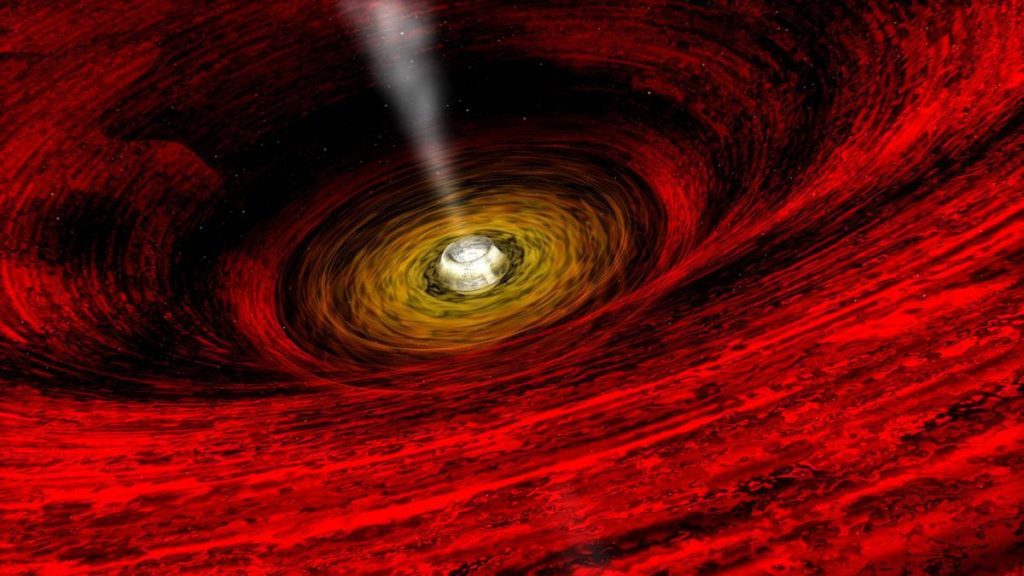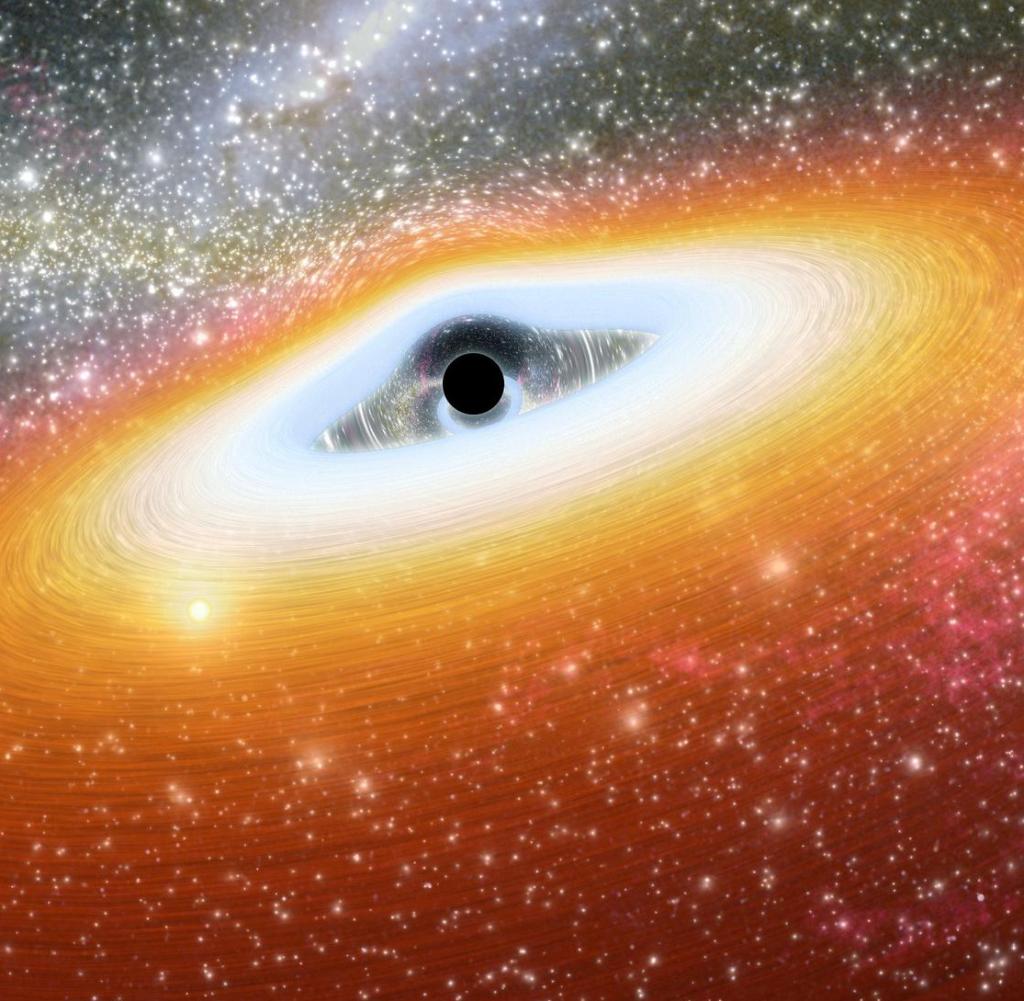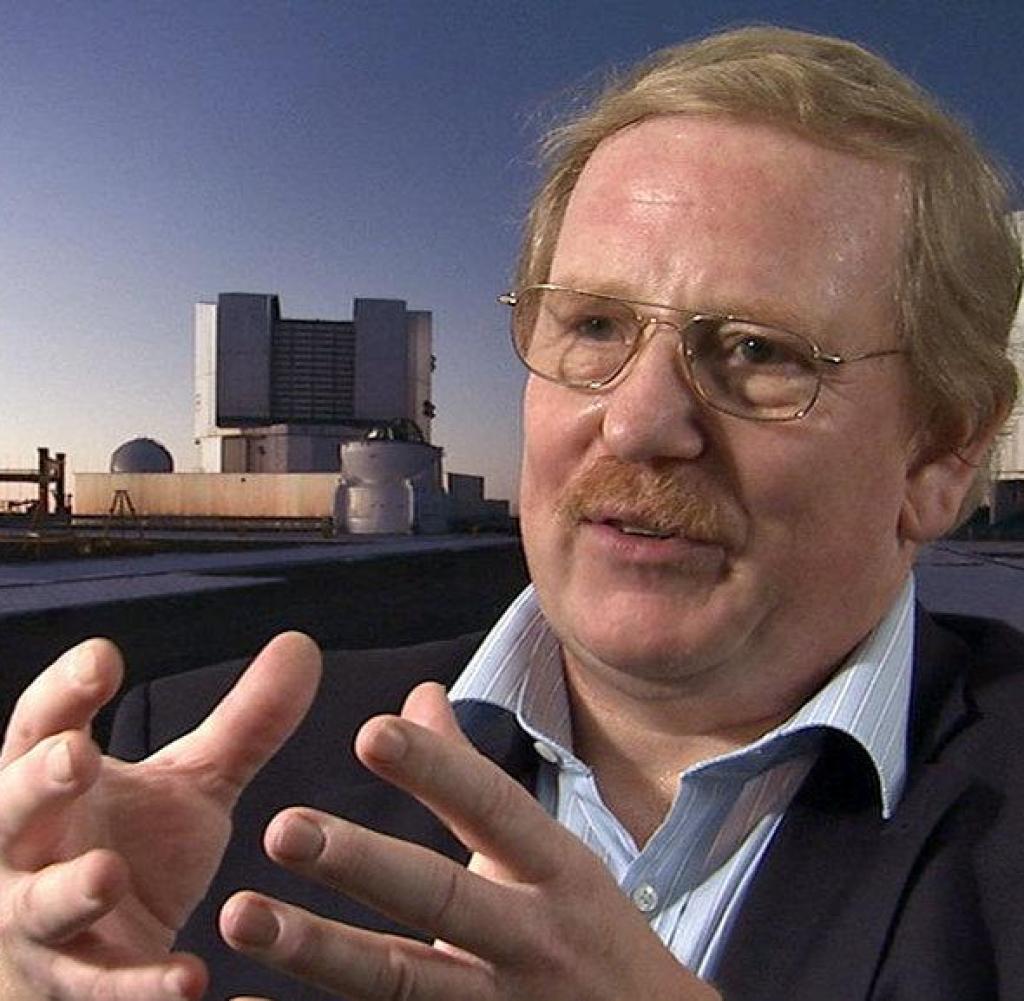sSince May 2022, there has been no doubt that a supermassive black hole exists in the center of our galaxy, the Milky Way. After years of work, an international team of researchers has been able to capture a “photo” of this gravitational monster called Sagittarius A* with the help of eight radio telescopes.
In the Astrophysical Journal, researchers presented evidence of a second black hole in the Milky Way. Unlike Sagittarius A*, it is not a stationary black hole, but an object that is cruising through the galaxy at high speed.
Scientists have never before been able to directly detect a single black hole migrating through interstellar space – although theoretical considerations suggest that there are more than 100 million migratory black holes in our galaxy.
Maybe 80 light years away from us
The black hole that has now been discovered is about 5,000 light-years away from Earth and is located in Kareena SagittariusThe spiral arm of our galaxy. From this information and complex statistical calculations, the researchers concluded that the closest black hole to Earth may be only 80 light-years away from us. For comparison: the nearest star – after the Sun – is located a little more than four light-years away.
The first discovery of a roaming black hole was made with measurements from Hubble Space Telescope. This method allowed not only to determine the distance of an object, but also to determine its speed and mass.
Accordingly, the black hole rushes through the Milky Way at a speed of 160 thousand kilometers per hour. Researchers determined its mass is seven times that of the Sun. Thus, this vagrant black hole is noticeably less massive than Sagittarius A* at the center of the galaxy. This gravitational monster has four million solar masses.
Seven times the mass of the sun
The relatively small mass of the newly discovered black hole fits well with the theoretical expectations of astrophysicists, who postulated the existence of such celestial bodies for a very long time. It is said to be only 20 times larger than our sun and was formed during supernova explosions of larger stars.
The core remaining in a black hole is supposed to explode due to gravitational forces. Because this implosion is not perfectly symmetric, the black hole that forms receives a thrust so that it thrusts through space, like a shot from a cannonball.
But how does the Hubble telescope, operating in the optical wavelength range, locate a lone black hole when it emits no visible light at all, and is not surrounded by material that emits detectable radiation? In the case of Sagittarius A*, the “image” was only possible because this black hole is surrounded by matter.
Fine lens detection enabled
This so-called accretion disk is gradually being swallowed by the black hole and heated up considerably in the process. The “image” of Sagittarius A* is, after all, a picture of the radiation emitted from the immediate vicinity of the black hole.
Although a single black hole does not contain this radiation, researchers have still been able to detect it. This is because it bends the surrounding space due to its gravity. This curvature leads, among other things, to the fact that the light from distant stars is on its way to Hubble telescope Flies close to the invisible black hole deviate slightly from its orbit.
Researchers talk about the so-called effect of microlensing. They demonstrate the accuracy of the observed deflection of light with the following example: what Hubble was able to establish corresponds to the observation of a coin located in Los Angeles using a telescope in New York, proving that the position of the coin was shifted by two centimeters.
Hubble was measured for six years
The challenge of such an accurate measurement can be seen from the fact that Hubble has collected data over a period of six years to prove the existence of this black hole.
Measurement data was evaluated by two independent research groups – on the one hand by a team at Space Telescope Science Institute in Baltimore under the supervision of Kailash Sahu and on the other hand by scholars from University of California at BerkeleyDirected by Casey Lamm.
The two teams came to slightly different conclusions, particularly regarding the mass of the vagrant’s body. That’s slightly smaller for the Lamm team, which leaves a small possibility that it could not be a black hole but a neutron star.
The explanation is not completely certain yet
“As much as we tend to say it’s definitely a black hole, we can’t hide the fact that there could be other possible explanations,” says Berkeley researcher Jessica Lu.
The search for unseen wanderers in the Milky Way will continue. With masses larger than when such an object was first discovered, it could certainly prove its nature as a black hole.
However, it is clear what further research will look like. Sahu notes that “there is no other way to detect isolated black holes than by measuring the effect of a microlensing”.

“Total coffee aficionado. Travel buff. Music ninja. Bacon nerd. Beeraholic.”









More Stories
Exploding Fireball: Find the meteorite fragments
Neuralink's competitor lets blind people see again with an implant
A huge meteorite has hit Earth – four times the size of Mount Everest